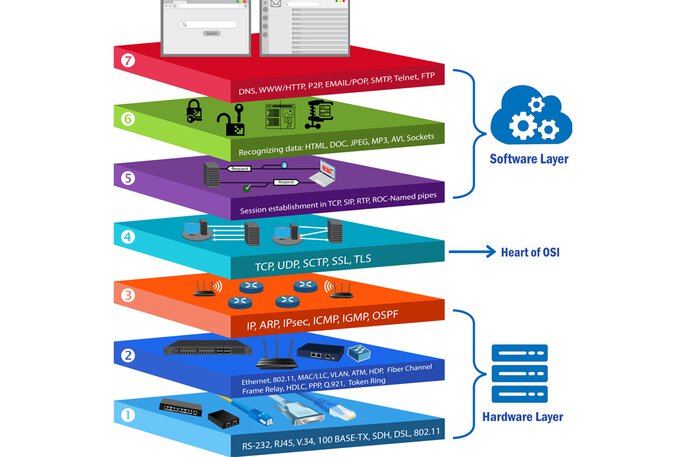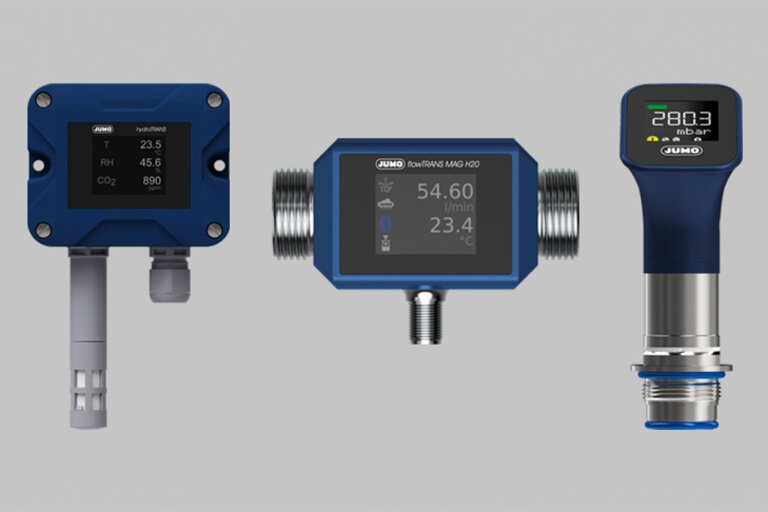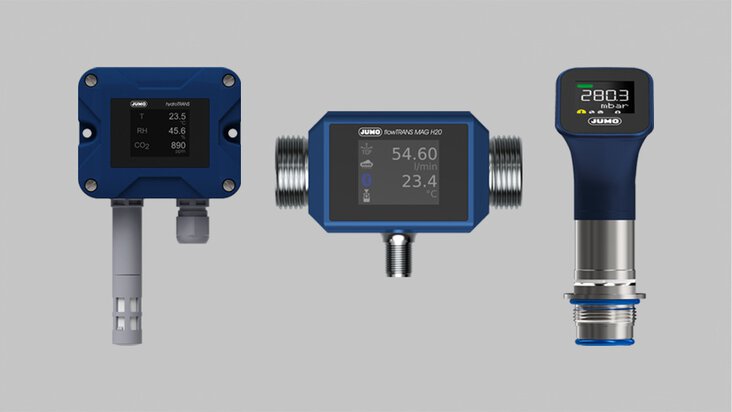
Single Pair Ethernet – the Ultimate Technology
In today's networked world, data transmission via Ethernet plays a crucial role. This has been particularly true since the introduction of Single Pair Ethernet, which opened up completely new possibilities and challenges for industrial applications. In the following article, we answer all the important questions about networking and integrating field devices and sensors based on Single Pair Ethernet and the associated benefits for industrial processes.
Table of contents
What is Single Pair Ethernet?
Single Pair Ethernet, or SPE, is an Ethernet-based communication that forms the basis for a variety of transmission protocols. The end-to-end concept enables direct data transmission between the sensor and the cloud, which ensures seamless communication without media discontinuity across all levels of the automation pyramid. This simplifies access to sensor data from the field level and the implementation of applications. In some cases, the technology is also incorrectly referred to as “Single per Ethernet”.
What does the OSI model indicate?
The OSI model (Open Systems Interconnection Model) is a conceptual framework that describes the standardized functions of a communication or computer network. It divides network communication into 7 successive layers, with each layer having specific tasks and functions. It helps to structure and standardize complex network communication. Single Pair Ethernet is located at the lowest level, which is the so-called physical layer.

OSI-Modell: (1) Physical Layer, (2) Data Link Layer, (3) Network Layer, (4) Transport Layer, (5) Session Layer, (6) Presentation Layer, (7) Application Layer
How is SPE different from traditional Ethernet?
The main difference lies in the number of cable pairs in the implemented data cable. While classic Ethernet uses 2 or 4 cable pairs depending on the transfer rate, SPE only requires a single twisted wire pair in the shielded data cable. In addition, the innovative technology based on the 10BASE-T1L standard enables cable lengths of up to 1000 m, whereas previously cable lengths of only 100 m had been the norm.
What does the abbreviation 10BASE-T1L mean?
The abbreviation 10BASE-T1L is a term made up of several partial aspects that contains the relevant information on the network connection. The number 10 indicates the transfer rate of 10 Mbps. The term “BASE” refers to the signal type which means that Ethernet signals can be transported via the data cable. “T1” stands for “twisted pair wire pair” and the abbreviation “L” for long distance, which means that data cable lengths of up to 1 km are possible.
What are the advantages of Single Pair Ethernet?
Single Pair Ethernet (SPE) offers several advantages, especially in the field of industrial automation and device networking. The most important benefits include:
Reducing cable complexity
SPE only uses single-pair copper data cables instead of the usual two-pair or four-pair data cables. This simplifies the cable architecture/assembly and reduces weight as well as space requirements. Mounting and routing in complex machines and plants is thereby made considerably easier, even in applications in which the data cable is subject to high bending stress.
Cost savings
Less cable material leads to lower costs for the cables themselves and for the installation. Maintenance costs can also be reduced.
High data transmission rates in real time
SPE supports real-time data transmission, which ensures improved process control and increased safety in industrial applications.
Power over Data Line (PoDL)
During data transmission, the voltage is also supplied via the same cable pair. This makes it easier to power devices and reduces the need for separate power cables.
Easier connectivity and integration
SPE facilitates integration into existing Ethernet infrastructures and supports standardized Ethernet protocols, which simplifies connectivity and integration into networks. All that is required is a Single Pair Ethernet switch with a properly supported IEEE 802.3 standard of the technological subgroup being used.
Improved reliability and robustness
SPE systems are often designed for harsh industrial environments, which makes them more resistant to environmental influences and mechanical loads.
Long distance transmission
SPE can transmit data over longer distances than conventional Ethernet, which can be an advantage in large industrial plants or buildings.
Security for the future
The growing number of IoT devices and the need to network them efficiently means that SPE offers a sustainable solution that keeps pace with the requirements of modern and future network applications.
For what applications is SPE technology suitable?
The barrier-free connection of field devices makes Single Pair Ethernet a door opener for innovations from which many sectors and branches of industry can benefit. These include industrial networks, automotive applications, building automation, and other applications where a robust, cost-efficient, or space-saving cabling solution is required. Single Pair Ethernet is also the technology of choice for use in harsh industrial environments or for climate monitoring in large warehouses and greenhouses. After all, the immense cable length means that sensors can also be integrated over long distances.
What data transmission rates does SPE support?
Single Pair Ethernet (SPE) enables different data transmission rates, which can vary depending on the technical requirements and cable length. These include:
10 Mbit/s (10BASE-T1 according to IEEE 802.3cg standard)
These transmission rates are designed for applications in which reliability is more important than high speed. A distinction is made between 2 main types:
- T1S (short distance): this variant is intended for short distances and supports multi-drop operation, in which up to 8 devices can be connected in an unshielded cable harness up to 25 m in length.
- T1L (Long Distance): this variant enables point-to-point Ethernet connections over a length of up to 1000 m. Here, a shielded two-wire cable is used, which also supports Power over Data Line (PoDL).
100 Mbit/s (100BASE-T1 according to IEEE 802.3bw standard)
This speed is often used in automotive networks, where it offers a good balance between speed and cost efficiency. The maximum length with an unshielded cable harness is 15 m.
1 Gbit/s (1000BASE-T1 according to IEEE 802.3bp standard)
This higher transmission rate is ideal for applications that require faster data transmission, such as in certain industrial applications or advanced vehicle systems. A length of 15 m can be realized with an unshielded cable, while a shielded cable offers a range of up to 40 m.
2.5/5/10 Gbit/s (multi-gig according to IEEE 802.3ch standard)
The multi-gig data transmission rates can be used to cover applications in the automotive sector that require very high bandwidths such as driver assistance systems or autopilot systems. A length of 15 m can be implemented with shielded data cables.
What are the special requirements for installing SPE?
Several factors are crucial to ensure efficient data transmission and end-to-end networking. This includes the type and quality of the cables, SPE-capable hardware (SPE switches, routers, and end devices) as well as the appropriate plug connectors and connections. Careful planning of the network design, consideration of the environmental influences, and professional installation are also required.
Which manufacturers offer Single Pair Ethernet sensors?
Single Pair Ethernet technology is an innovative technology that has so far only been offered by individual sensor and automation technology companies. Successful marketing is achieved via 2 different mergers of technology drivers. The best known is the Single Pair Ethernet Systems Alliance, which provides a good overview of possible sensor and technology providers in its member directory.
What are the goals of the Single Pair Ethernet System Alliance?
The Single Pair Ethernet System Alliance focuses on the development, standardization, and distribution of SPE. Its main objectives include:
- Promotion of SPE technology: a primary goal of the Alliance is to raise awareness of the benefits and potential applications of SPE. This includes highlighting the efficiency, cost benefits, and improved performance that SPE offers over traditional Ethernet solutions.
- Development and standardization: the Alliance is working on the development and standardization of SPE to ensure broad interoperability and compatibility between different devices and systems. This includes work on technical specifications, performance requirements, and standards.
- Collaboration between members: the Alliance promotes cooperation between its members, who come from different industries and sectors. This facilitates the exchange of knowledge as well as experience and also supports the development of innovative SPE solutions.
- Market development: it supports the development of the SPE market through various initiatives including marketing activities, trade fairs, and conferences to make the technology accessible to a wider audience.
What does the future hold for Single Pair Ethernet?
Single Pair Ethernet is regarded as a pioneer in process automation and has the potential to fundamentally change the way data is transmitted in industrial and industry-related applications. It is therefore enjoying growing industrial acceptance and will play a key role in IoT applications in the future. These include smart city applications, intelligent buildings, connected vehicles, and more. From a technical point of view, there is no way around Single Pair Ethernet.
- ${title}${badge}




